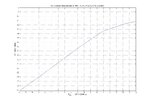luckyali
Member level 5
hi,
about conversion loss, it is clear that it's the difference b/w input and ouput power levels.
I tried to measure it in lab and did the setup like, I fixed the frequency of both LO and Input and measured the ouput power and draw this plot...

LO= 22 Ghz with +20dBm
IF = 100 Mhz and variable power level
and I correct in my thinking or am I doing it wrong??
about conversion loss, it is clear that it's the difference b/w input and ouput power levels.
I tried to measure it in lab and did the setup like, I fixed the frequency of both LO and Input and measured the ouput power and draw this plot...

LO= 22 Ghz with +20dBm
IF = 100 Mhz and variable power level
and I correct in my thinking or am I doing it wrong??

